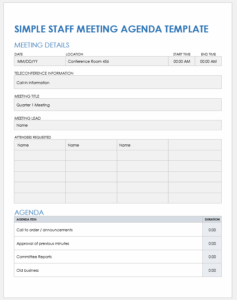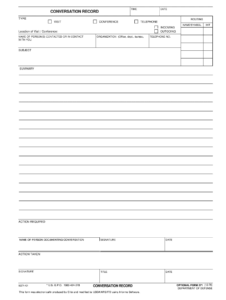Ever feel like you’ve had a super important conversation at work, only to completely forget the crucial details a week later? We’ve all been there. Whether it’s a client call, a team meeting, or a one-on-one with your boss, key information can slip through the cracks if it’s not properly documented. That’s where a post conversation documentation template comes in handy. It’s a simple tool that can save you a ton of time and prevent misunderstandings down the road.
Think of it as your conversational memory bank. Instead of relying on your recollection (which, let’s face it, isn’t always reliable), you have a written record of what was discussed, decided, and what actions need to be taken. It’s not about being a stickler for rules; it’s about ensuring everyone is on the same page and that important tasks don’t fall by the wayside. Plus, having a record can be incredibly helpful when reviewing past projects or preparing for future discussions.
In this article, we’ll dive into why a post conversation documentation template is so valuable, what to include in one, and how to use it effectively. We’ll also touch on some tips and tricks for making the documentation process as painless as possible. Get ready to say goodbye to those “Wait, what did we decide again?” moments!
Why is Post Conversation Documentation Important?
The benefits of documenting your conversations, particularly in a professional setting, are numerous. For starters, it improves clarity and alignment. When everyone involved in a conversation has access to the same documented summary, there’s less room for misinterpretation and conflicting recollections. This is especially crucial for projects involving multiple stakeholders and complex requirements.
Furthermore, post conversation documentation provides a valuable historical record. It allows you to track decisions, action items, and key discussion points over time. This is incredibly useful for performance reviews, project retrospectives, and even legal compliance purposes. Imagine trying to recall the specifics of a project that concluded six months ago without any written record – a headache, right? Documentation eliminates that problem.
Improved accountability is another significant advantage. When action items are clearly documented with assigned owners and deadlines, it’s easier to track progress and ensure that tasks are completed on time. This fosters a sense of responsibility and helps to prevent things from slipping through the cracks. No more pointing fingers – everyone knows what they are responsible for.
Think about it – how many times have you been in a meeting where brilliant ideas are generated, only to be forgotten or misinterpreted later? Documenting conversations helps to capture those valuable insights and ensures that they are not lost. It also facilitates knowledge sharing within the team. New team members can quickly get up to speed by reviewing past conversation records, and everyone can benefit from the collective wisdom of the group.
In essence, a post conversation documentation template is not just about taking notes; it’s about creating a shared understanding, fostering accountability, preserving knowledge, and ultimately, improving communication and collaboration. It’s an investment in efficiency and clarity that pays dividends in the long run.
Creating an Effective Post Conversation Documentation Template
So, what should you include in your post conversation documentation template? The key is to keep it concise, relevant, and easy to use. Overly complex templates are less likely to be consistently used. Start with the basics: date, time, and participants of the conversation. This provides essential context for anyone reviewing the document later.
Next, clearly state the purpose or objective of the conversation. What was the main topic being discussed? What were you hoping to achieve? This helps to frame the conversation and provides a focus for the summary. Then, summarize the key discussion points. Focus on the most important topics that were covered and avoid getting bogged down in minor details. Use bullet points or short paragraphs to keep the summary concise and easy to read.
Perhaps the most crucial element of any post conversation documentation is the action items. Clearly list any tasks that were assigned, including the responsible party and the deadline for completion. This ensures that everyone knows what they need to do and when they need to do it. Consider adding a status column to track the progress of each action item.
It’s also helpful to include any decisions that were made during the conversation. This provides a clear record of the agreed-upon course of action. If there were any open questions or unresolved issues, note them as well. This will help to keep track of pending items and ensure that they are addressed in future conversations. Finally, consider adding a section for any supporting documents or links that are relevant to the conversation. This could include project plans, meeting agendas, or research papers.
Remember, the goal is to create a useful and informative document that can be easily accessed and understood by anyone who needs it. Don’t be afraid to experiment with different formats and layouts to find what works best for you and your team. The important thing is to consistently use a post conversation documentation template to capture and share the valuable information exchanged in your conversations.
Ultimately, having a system in place to record and recall important discussions can save you and your team valuable time and effort. You will know where to look for past decisions and action items.
This is just one more step towards a more efficient and productive workplace, ensuring that great ideas don’t get lost and everyone stays on the same page.



